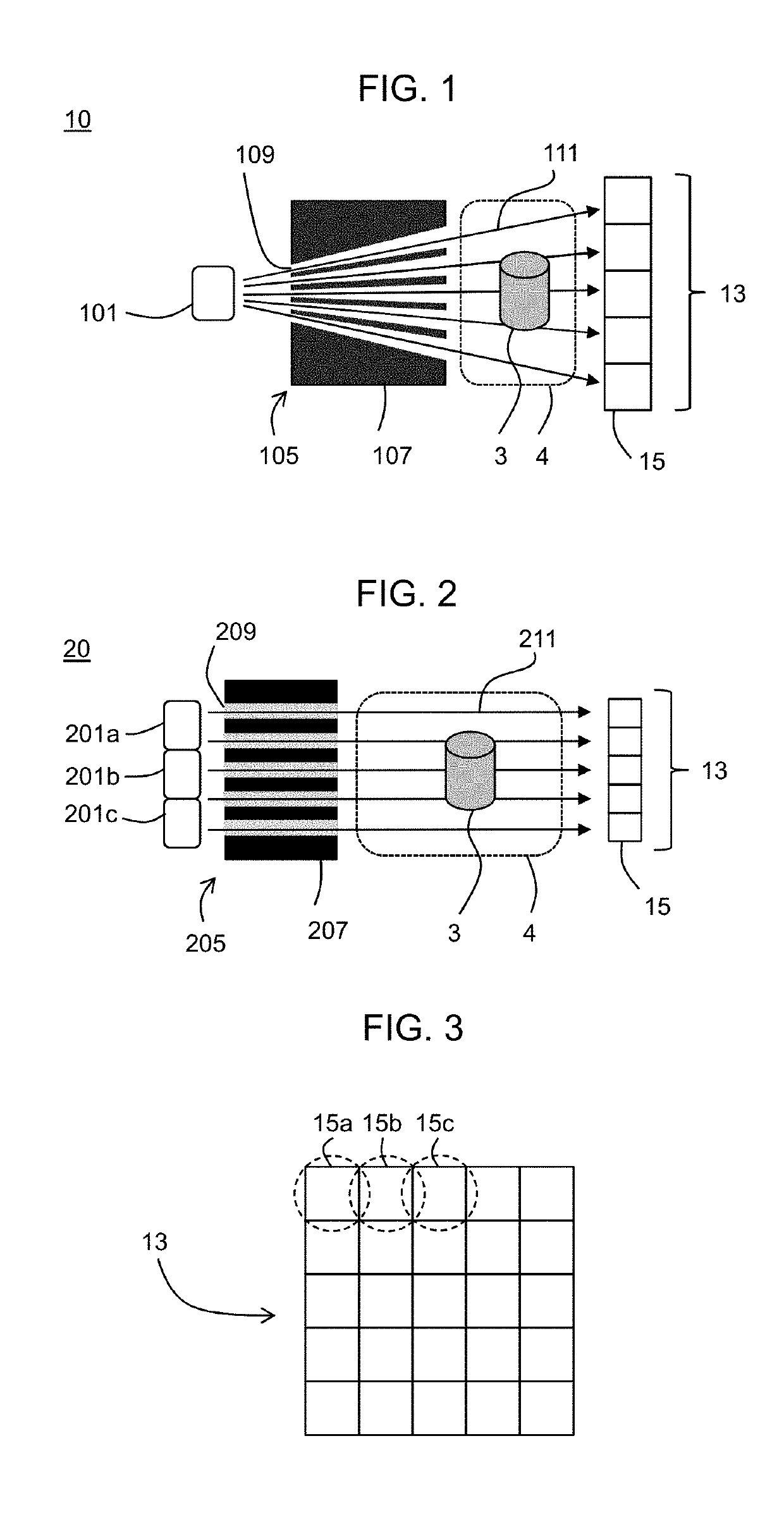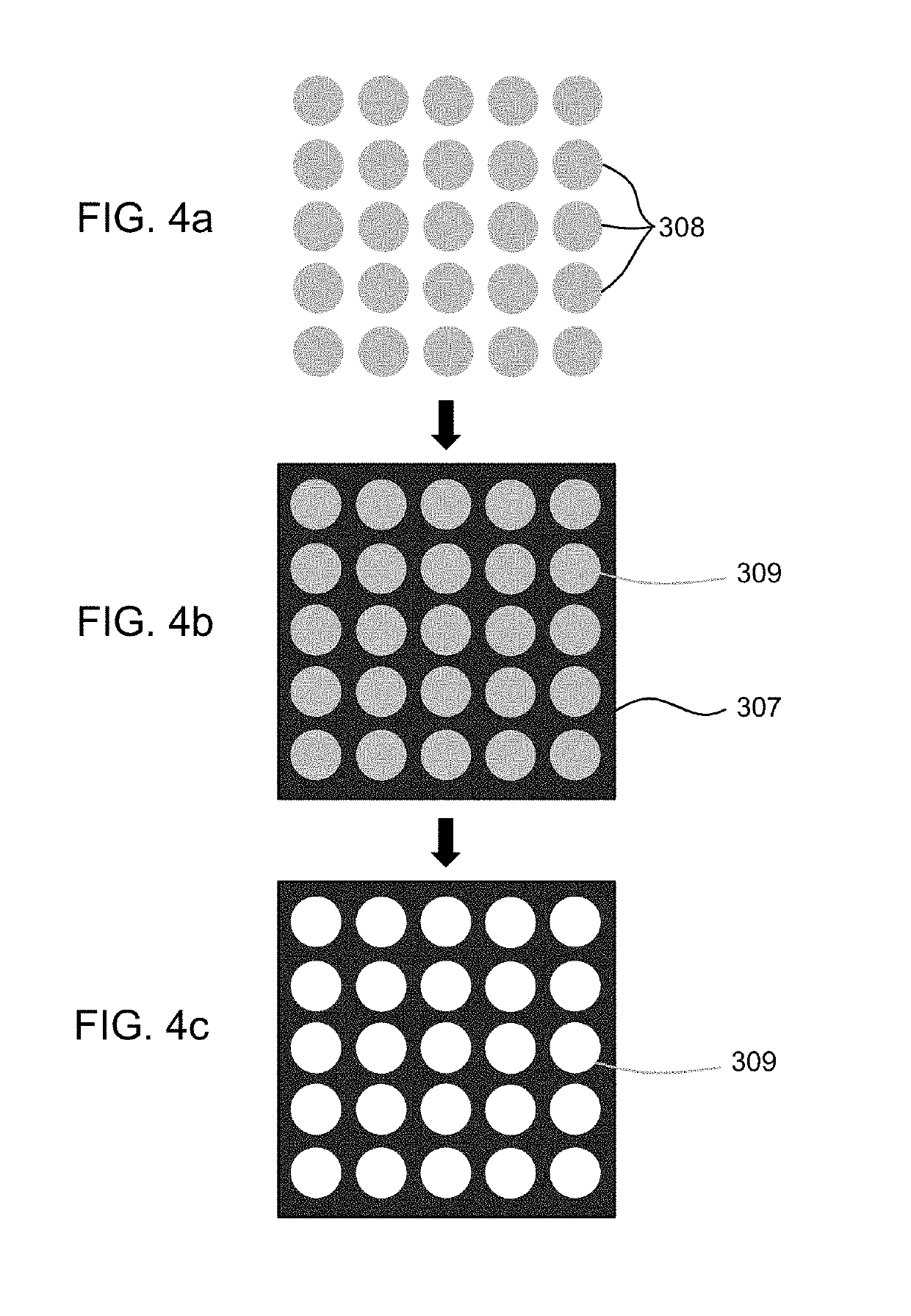X-ray imaging systems and methods, and methods of manufacture of collimators for use therein
- Summary
- Abstract
- Description
- Claims
- Application Information
AI Technical Summary
Benefits of technology
Problems solved by technology
Method used
Image
Examples
example 2d
X-Ray Applications
[0105]One example application for x-ray imaging is imaging of large aero-engine castings such as an intercase of approximately 800 mm diameter by 250 mm deep.
[0106]Current industry standard for imaging such components is a closed tube x-ray source (300 to 600 keV), having a 300 μm or greater spot size. By using x-ray imaging systems and / or methods as described herein, it is possible to reduce effective spot size down to e.g. 0.1 mm, and thus allow improved magnification and image resolution.
[0107]Another example application is imaging of partial or whole assemblies of an engine. Currently whole engine radiography is carried out using a linear accelerator source (>1 MeV), with a large spot size of e.g. 1 to 5 mm. By using x-ray imaging systems as described herein, it is possible to reduce the equivalent spot size to e.g. between 0.1 mm and 0.5 mm. Reduction in effective spot size by an order of magnitude can allowing for far greater magnification without geometric u...
example 3-d (
CT) X-Ray Applications
[0108]Another example of a target application is 3D imaging of a nozzle guide vane (NGV). Nozzle guide vanes are typically manufactured from dense metal (e.g. nickel based superalloy), and typically have an overall size of approximately 75 mm×75 mm×75 mm, a thickness of 20-30 mm, and one or more internal passageways of the scale of 1 mm diameter. Successful imaging of the internal cooling passageway(s) in the NGV requires high image resolution due to the small size of the passageways.
[0109]Current industry standard for imaging such components is to use:
[0110]a) 450 keV source, micro-focussed to a 60 μm spot size; or
[0111]b) Closed tube 450 keV source with a 300 μm spot size, (sealed system)
[0112]However, using x-ray imaging systems and methods as described herein it is possible to achieve spot sizes as low as 5-10 μm for both micro-focus and closed tube sources, whilst allowing use of high amperage x-ray sources which may enable reduced data acquisition time.
[0...
PUM
 Login to View More
Login to View More Abstract
Description
Claims
Application Information
 Login to View More
Login to View More - R&D
- Intellectual Property
- Life Sciences
- Materials
- Tech Scout
- Unparalleled Data Quality
- Higher Quality Content
- 60% Fewer Hallucinations
Browse by: Latest US Patents, China's latest patents, Technical Efficacy Thesaurus, Application Domain, Technology Topic, Popular Technical Reports.
© 2025 PatSnap. All rights reserved.Legal|Privacy policy|Modern Slavery Act Transparency Statement|Sitemap|About US| Contact US: help@patsnap.com



